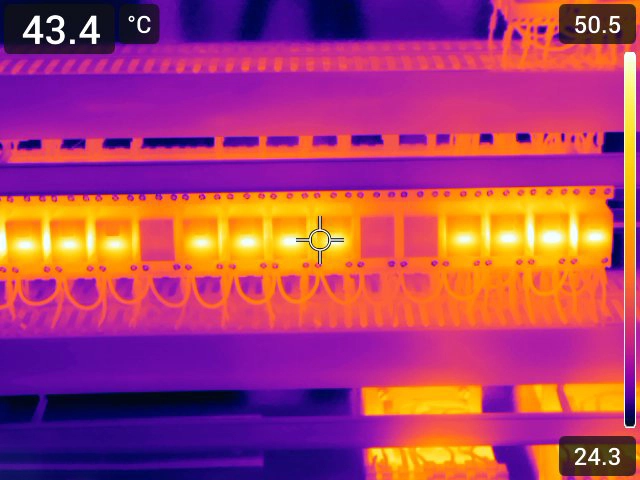#statusMessage#
Do you want to start the compare now?

How Thermography Enhances Manufacturing.
Machine stoppages, component overheating, or electrical faults—unplanned downtime is a major challenge in many production environments. Such incidents can not only lead to significant financial losses but also disrupt the entire supply chain. Modern infrared (IR) cameras help minimize these risks. Contactless measurement technology enables real-time detection of anomalies, allowing corrective actions before damage becomes critical.
In industrial quality control and maintenance, early detection of defects is essential to avoid scrap, rework, and costly downtime. Many conventional methods—such as visual inspections or mechanical testing—have inherent limitations:
Thermal imaging technology provides a fast, automatable, and contactless solution. It enables precise detection of temperature differences and hidden defects that are invisible to the naked eye. Standards such as ISO 18434-1 for machine condition monitoring (DIN ISO 18434-1:2008-11) and VDI/VDE 5585 for industrial thermography (VDI/VDE 5585 Part 1, 2015) define reliable application guidelines. Continuous advancements in infrared sensor technology and image processing systems have made thermal cameras increasingly vital for automated inspection processes and quality assurance.
Thermal imaging cameras are used across a wide range of production processes:
Regular thermographic inspection of machines and electrical systems allows early detection of potential failures. Overheating of bearings, control cabinets, or mechanical components is often the first indicator of impending defects. Thermal cameras enable continuous monitoring and extend the service life of production equipment. Thermography has proven particularly effective in energy supply and high-voltage applications for detecting insulation faults, damaged contacts, or load imbalances.
Modern systems also allow integration of thermal imaging with IoT platforms and artificial intelligence. Algorithms can analyze historical temperature data, identify trends, and automatically generate warnings before critical thresholds are reached. This approach not only makes maintenance more predictable but also improves overall operational efficiency.
| Test Method | Advantages | Disadvantages |
|---|---|---|
| Thermal Imaging Camera | Contactless, nondestructive testing (NDT), fast large-area inspection, real-time monitoring | Material-dependent (emissivity), limited penetration depth |
| Automated Optical Inspection (AOI) | High-resolution defect detection, reliable for geometric deviations | Not suitable for thermal or internal defects |
| Ultrasonic Testing | Effective for internal material defects, high penetration depth | Time-consuming, requires contact or coupling medium |
Unexpected machine downtime can cost companies between $5,000 and $50,000 per hour, depending on the industry. Regular thermographic inspection of critical production equipment can significantly reduce these risks.
Using thermal imaging cameras for quality control in production offers numerous advantages—from early detection of potential defects and process optimization to predictive maintenance. Continuous improvements in sensor technology and integration with digital monitoring systems make thermography an indispensable part of modern manufacturing and maintenance strategies. Companies leveraging this technology benefit from reduced downtime, higher product quality, and more efficient operations.
High-quality thermal cameras from leading brands in the dataTec portfolio allow efficient optimization of quality assurance and process control—reducing costs, minimizing scrap, and maximizing productivity.
You are not quite sure yet or have further questions about the products? Do not hesitate to contact us. Whether directly on the phone or via online demo conveniently in front of your screen - our experts are there for you.